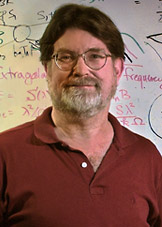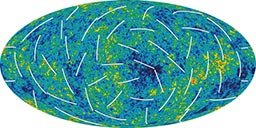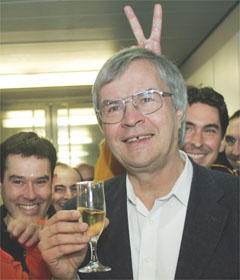Physics Nobel 2023: A Primer
Image Courtsey: NobelPrize.org
Author: Biplab Bhawal
In the early days of photography, pictures were all motionless. Those were either pictures of calm and quiet landscapes or pictures of families, in which -- not just the parents -- even the children were all very sober and sensible boys and girls. They never seemed to be running around.
But people could never live happily thereafter with whatever was achieved by then. They wanted something better.
They observed how the legs of a running baby or a horse were getting ghostly blurry when they tried taking pictures of such objects in motion. Photographing the 100m race at the Olympics posed a similar problem.
So, Now they started worrying about `Shutter Speed' or how quickly the shutter of the camera `opens and closes'. Things were getting blurry because the shutter speed could not catch up with the speed of the object in the photograph.
The minimum 'shutter speed' used these days is rough 'one-sixtieth of a second', depending on what the image is and how far away the focus is.
But, as usual, people could never live happily thereafter with whatever was achieved at any point in time. As usual, They wanted something even better.
They wanted to see every minute movement of the body of an athlete running 100 meters. They wanted to see how exactly hummingbird's wings flap up and down so quickly.
Thus began the era of photography when people wanted to see what they could not even see with their naked eyes.
The greatest achievement of humankind in the year 2020 was the quick development of the COVID-19 vaccine. So, most people could not pay enough attention to keep track of the news that in the same fateful year, a camera was developed at Caltech with a shutter speed of 140 trillionths of a second.
Again, people are not satisfied yet ....
Some thought they would want to get a better look at how electrons move around in atoms to understand how atoms and molecules interact with each other and how various chemical reactions happen.
Electrons, however, move very quickly within atoms. The speed is about 2200 km per second. At this speed, one can travel around the earth in just 18 seconds.
So researchers gradually developed such a unique pulse laser that is capable of generating an equivalent `shutter speed' of only 4000 trillionths of 1 second.
[Remember though we are now looking at what is happening inside atoms. The concept of `shutter speed' is no longer quite appropriate here. The act of `Looking' is no longer the same as `Looking with our eyes'. The size of an atom is about ten-millionth of a hair-width. So, `looking inside an atom' is governed by quantum mechanics. Newtonian Physics and intuition do not really apply here]
This year's Nobel Prize is a recognition of that success.
Labels: Atomic Physics 6, Laser 4, Nobel Prize, Photonics 11




















